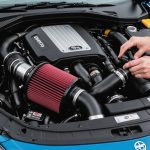Overview of Surface Rust on the Suzuki DRZ400
Surface rust is a common issue in motorcycle maintenance, particularly impacting models like the Suzuki DRZ400. It typically appears as a thin layer of corrosion on the metal surfaces of the motorcycle frame. This rust forms when iron reacts with moisture and oxygen in the air, an occurrence accelerated by exposure to rain or humid conditions.
The Suzuki DRZ400 is particularly vulnerable to surface rust due to its frequent use in off-road conditions. Mud and water can easily adhere to its undercarriage, creating an ideal environment for rust to develop. Given the bike’s adventurous nature, it’s crucial to regularly inspect and clean it to prevent this unwanted oxidation.
Have you seen this : Step-by-Step Guide to Effectively Retrofit a Quickshifter on Your Kawasaki Ninja 650
Addressing surface rust promptly is vital for the long-term maintenance of your motorcycle. Not only does rust compromise the structural integrity of the frame, but it also detracts from the bike’s aesthetic appeal. Early intervention prevents minor rust from escalating into more serious corrosion, which could necessitate costly repairs.
Routine inspections and implementing preventative measures, such as applying protective coatings or keeping the bike dry, can greatly reduce the occurrence of surface rust on the Suzuki DRZ400. Regular care will ensure your motorcycle remains both durable and visually appealing.
Additional reading : Enhance Your Kawasaki KLR650 Ride: Top Suspension Upgrades for Superior Comfort
Preventive Measures Against Surface Rust
When it comes to maintaining your motorcycle, employing effective rust prevention strategies is essential. Protective coatings and sealants play a crucial role in safeguarding against surface rust. Applying a high-quality protective coating to the frame creates a barrier against moisture, which is a primary cause of rust. Sealants provide an additional layer of protection, ensuring that vulnerable metal parts are shielded from the elements.
Regular maintenance tips are vital in preventing rust accumulation. It’s recommended that you routinely inspect your bike for any signs of rust or corrosion. Taking proactive steps, like cleaning and drying your bike after rides, especially if you’ve ridden through wet or muddy conditions, helps inhibit rust development. Removing dirt and moisture promptly limits their corrosive impact.
Moreover, keeping your motorcycle clean and dry in all conditions cannot be overstated. Regular washing followed by drying prevents grime build-up, which can trap moisture and accelerate rusting. Opt for covers if storing your bike outdoors to protect it from rain and humidity.
By integrating these maintenance tips into your routine, you ensure the longevity and performance of your motorcycle, allowing you to enjoy smooth rides without the worry of rust-related issues.
Steps to Treat Surface Rust on Your Suzuki DRZ400
Addressing surface rust on your Suzuki DRZ400 is essential to maintain its appearance and structural integrity. Here’s a comprehensive guide with a focus on DIY methods and restoration process.
Assessment of Rust Damage
Begin by inspecting your motorcycle’s frame meticulously. Look for discolored patches or flakes, which indicate rust development. Using a small brush or cloth, rub the surface to assess the depth of the rust. Superficial rust can be treated easily, while deeper corrosion might require professional intervention.
Tools and Materials Required for Treatment
Gather all necessary tools to commence the rust treatment:
- Sandpaper (various grits)
- Rust remover solution
- Protective gear (gloves, goggles)
Ensure you have a clean, dry workspace before starting the restoration process.
Step-by-Step Rust Removal Process
- Sanding: Begin with coarse sandpaper to remove the outer rust layer. Gradually use finer grits to smooth the surface.
- Cleaning: Wipe the sanded area with a clean, damp cloth to eliminate dust and debris.
- Apply Rust Treatment: Follow the rust remover instructions closely, ensuring even application on the affected surface.
- Protective Coating: Once dried, apply a protective layer to avoid future rusting.
By following these steps, you can effectively manage rust on your Suzuki DRZ400, enhancing both its longevity and performance.
Recommended Products for Rust Prevention and Treatment
Effective rust treatment products are essential to maintain your motorcycle’s longevity, especially for models like the DRZ400. Here, we highlight some top-rated protective sprays and sealants that enthusiasts and experts recommend.
When considering options, protective sprays like WD-40 Specialist Long-Term Corrosion Inhibitor are often praised for providing a barrier against rust and moisture. Such sprays are ideal for DIY applications, allowing enthusiasts to apply them easily without professional assistance. On the other hand, commercial products like POR-15 Rust Preventive Coating offer industrial-strength protection, suitable for those who prefer a more robust solution.
Restoration kits, such as the Rust-Oleum Automotive Rust Treatment Kit, are another excellent resource. These kits typically include sealants and rust converters to stop existing corrosion and prevent future damage. For the DRZ400, selecting a kit that offers comprehensive protection without compromising the bike’s aesthetics is crucial.
When deciding between DIY and commercial rust treatments, consider factors like ease of use, cost, and level of protection required. DIY solutions are often more affordable and accessible, while commercial options might provide a longer-lasting effect for areas prone to extreme weather conditions. Choose based on your specific needs and riding environment.
Long-term Maintenance Tips for Your Suzuki DRZ400
Proper motorcycle care extends the lifespan of your Suzuki DRZ400. Long-term maintenance is crucial to prevent the onset of rust and ensure longevity. Seasonally, your routine should focus on tasks that keep moisture away from metal surfaces. Apply a rust inhibitor to vulnerable areas, such as the frame and exhaust, during the wetter months.
Storage conditions significantly impact rust prevention. Always store your motorcycle in a dry, insulated environment, away from direct rain or snow. Covering the bike with a breathable cover prevents condensation build-up, which could promote rust. Moreover, proper ventilation in the storage area helps keep humidity levels low, further protecting against rust.
Regular inspections are key in identifying early signs of corrosion. Focus your checks on the frame and other exposed metal parts. If you do find any signs of rust, promptly address them with a rust remover and re-treat the surface with a rust inhibitor. Basic care, like washing and drying after every ride, especially on salty roads, also plays a vital role in preserving your motorcycle’s condition over time. By following these simple, consistent maintenance practices, you can enjoy your Suzuki DRZ400 for many years to come.
Common Issues Related to Rust on the Suzuki DRZ400
Rust is an unwelcome guest for any motorcycle owner, particularly those who ride the Suzuki DRZ400. Corrosion problems can impact not only the bike’s appearance but also its performance and safety. For DRZ400 owners, identifying early signs is crucial. Look for small rust spots around the frame, exhaust, and other metal parts. These warning signs are often easy to miss, but catching them early can prevent extensive damage.
Without prompt attention, rust can weaken crucial structural components, leading to potentially dangerous situations. Imagine heading out for a ride, only to find your brakes aren’t as responsive due to corrosion issues. Such problems make regular inspections a necessity.
To combat rust effectively, practice routine maintenance. This might include applying anti-rust treatments and regularly cleaning your bike, especially if you frequently encounter wet or muddy conditions. In some cases, replacing rust-prone parts with rust-proof alternatives can be an effective long-term solution.
For DRZ400 owners facing recurring rust challenges, addressing the root causes is essential. Whether it’s exposure to harsh weather or inadequate maintenance, understanding and rectifying these factors will ensure your motorcycle remains in top condition.











